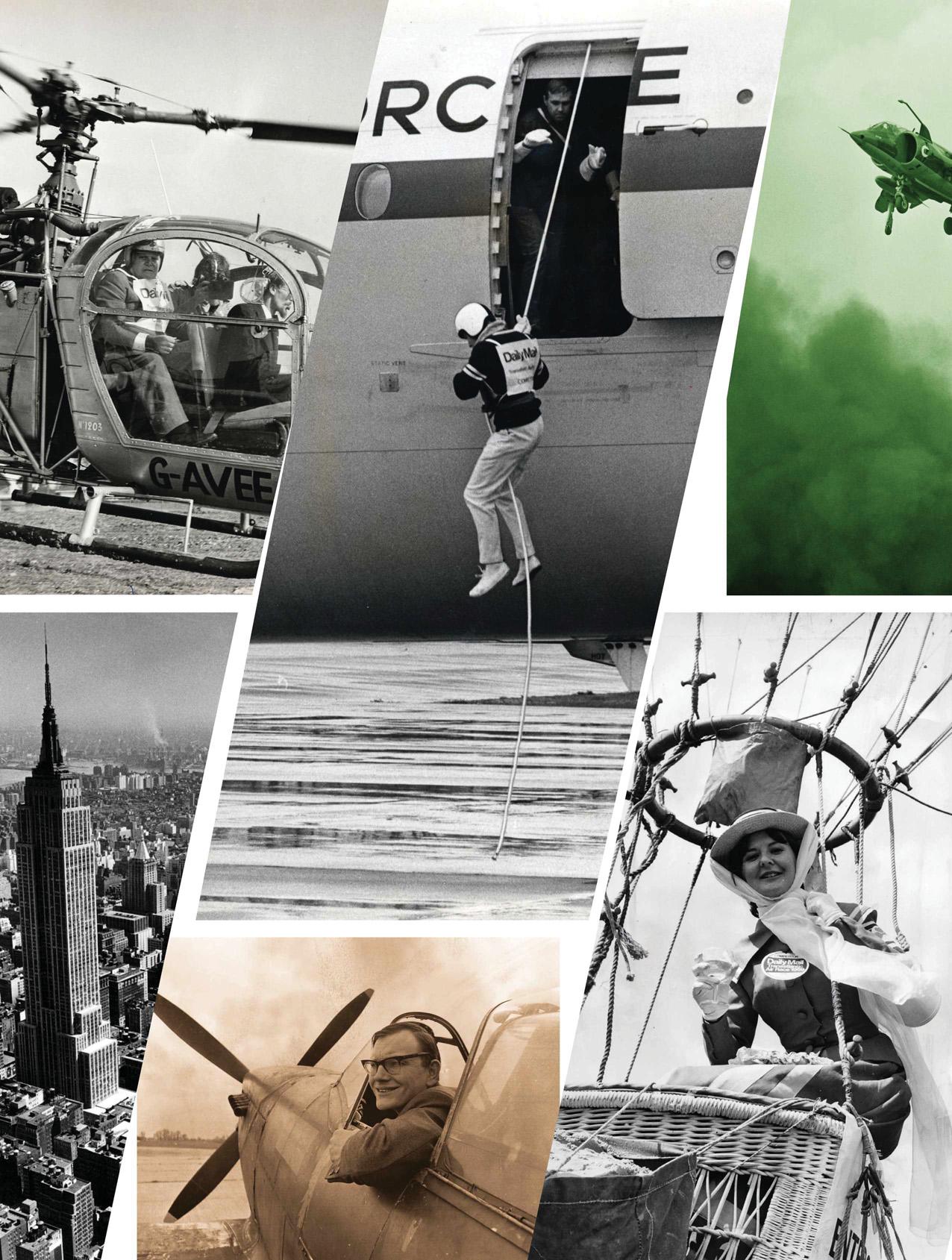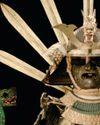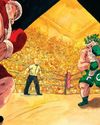THE RACE ACROSS THE ATLANTIC
Christmas 2023
|BBC History UK
In 1969, everyone from Prince Michael of Kent to Billy Butlin competed in a dash between London and New York aboard tandems, sedan chairs and jump jets recalls a madcap forerunner of Race Across the World

If you had been walking along the streets of eastern Manhattan on 5 May 1969, you would have been greeted by a curious sight. Hovering in the skies above the great metropolis like a giant steel kestrel was one of the most technically advanced military aircraft in history. Instead of rolling down a runway, the plane slowly descended vertically to the ground in a cloud of dust. Once it touched down, its canopy opened and a pilot hopped out and zoomed off towards the Empire State Building in a red motorcycle.
What on Earth was going on? And why was the pilot in such a hurry? The answer is that he was one of the frontrunners in an event called the Daily Mail Transatlantic Air Race, and he was just a matter of miles away from scooping a £6,000 prize for bagging first in class.
The giant steel kestrel – which was, in fact, a Hawker Siddeley Harrier, among the Royal Air Force’s most prized pieces of kit – was just one of the many weird and wonderful vehicles to convey competitors across the Atlantic in the seven-day competition. Tandems, sedan chairs, speedboats and hot-air balloons were all deployed in an attempt to cover the 3,400 miles that separated the start and end points as quickly as possible. With everyone from racing drivers and athletes to millionaire businessmen and high-ranking royals throwing their hats into the ring, it’s hardly surprising that this madcap, high-speed contest made headlines around the world.

Simple but deceptive
هذه القصة من طبعة Christmas 2023 من BBC History UK.
اشترك في Magzter GOLD للوصول إلى آلاف القصص المتميزة المنسقة، وأكثر من 9000 مجلة وصحيفة.
هل أنت مشترك بالفعل؟ تسجيل الدخول
المزيد من القصص من BBC History UK

BBC History UK
On the skids
Richard Rodgers and Oscar Hammerstein II's smash musical Oklahoma! opened on Broadway on 31 March 1943.
1 min
Christmas 2025

BBC History UK
Small pleasures
Memory is imperfect, but what if you could get a professional model maker to recreate a moment from the past?
1 min
Christmas 2025

BBC History UK
Bath in five places
In the Georgian era, Bath became arguably Britain's most fashionable destination. KIRSTEN ELLIOTT promenades five historic highlights
3 mins
Christmas 2025

BBC History UK
End times
Why do civilisations that dominated their epoch fail? In an era of autocracy, climate change, the rise of Al and a first-hand understanding of how deadly pandemics can be, it's a question that seems pertinent.
1 min
Christmas 2025

BBC History UK
What are the origins of the Yule Lads?
To learn about the Jólasveinar (Yule Lads), we must start with their mother, the terrifying ogress Grýla. Her name appeared in Icelandic texts as early as the 13th century, although it wasn’t until later that those 13 mischievous lads became associated with her. Folk tales and poems tell how she descends from the mountains with an empty sack to stuff full of children. Grýla owns the monstrous Jólaköttur (Yule Cat), which roams the countryside on Christmas Eve, searching for children to gobble up if they're not wearing new clothes.
1 mins
Christmas 2025

BBC History UK
Santa Claus v Father Christmas
The true identity of the white-bearded, red-robed figure who fills children's stockings at Christmas has long been debated. Thomas Ruys Smith sizes up the merry contenders
8 mins
Christmas 2025

BBC History UK
Frontier friction
Set in Washington Territory in 1854, The Abandons is a Western that's unusual for having two matriarchs, women whose lives become entangled, at its centre.
1 min
Christmas 2025

BBC History UK
The Last Days of Pompeii: The Immersive Experience
Delve into the culture of daily Roman life, witness the momentous eruption of Mount Vesuvius, and follow its fallout in Immerse LDN's new exhibition. In a blend of cutting-edge technology and vivid storytelling, this exhibition launches visitors into Pompeii's rich history with recreations of the ancient city's beautiful pre-eruption landscape, a 360-degree virtual reality Roman amphitheatre experience, and a digital metaverse recreating Pompeii's 'Villa of Mysteries'.
1 min
Christmas 2025

BBC History UK
Elizabeth Marsh The corsair's captive
Taken hostage by a Barbary ship's captain in the 18th century, a young Englishwoman found herself fighting for her freedom in Marrakech. ADAM NICHOLS introduces a brave captive who later wrote a book about her dramatic experiences
6 mins
Christmas 2025

BBC History UK
29 DECEMBER 1170: Thomas Becket is murdered in Canterbury
Knights loyal to Henry II rid him of the “low-born cleric”
2 mins
Christmas 2025
Translate
Change font size

